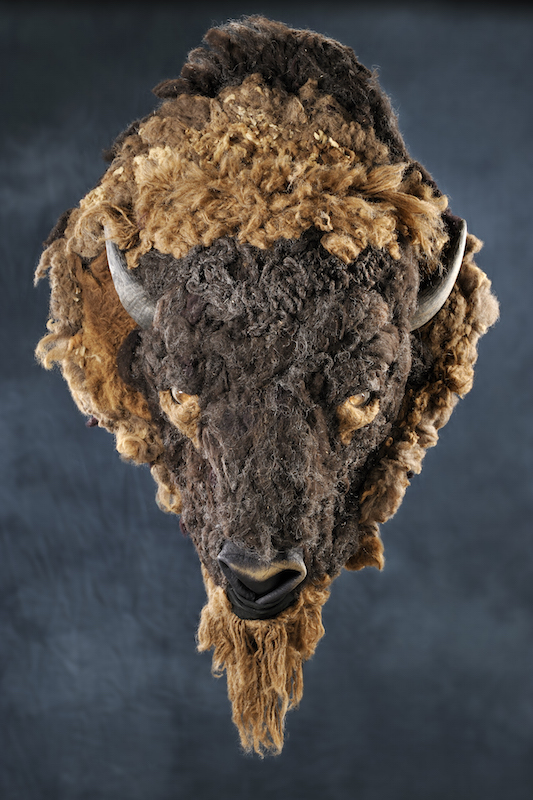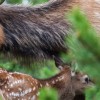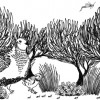In Wyoming, wildlife does more than just satisfy the fleeting affections of summertime tourists holding smartphones out car windows. For many of the state’s residents, wildlife means food for the body and soul, money in the bank, a way of life. A 2014 public opinion poll conducted by the UW Ruckelshaus Institute, Wyoming Stock Growers Association, Wyoming Stock Growers Agricultural Land Trust, and The Nature Conservancy – Wyoming, found that 74% of Wyomingites surveyed considered wildlife to be an important part of their daily life. And 66% said that declines in numbers of big game animals are a serious issue, on par with concerns about jobs and quality public education.

To talk about wildlife is to talk about habitat, both of which Wyoming still has in abundance. Blur your eyes and the sagebrush steppe reduces down to blue sky and gray-green sea. The highway traveler might use words like empty or wasteland, but the researchers highlighted in this issue look closer. Hidden beneath the sagebrush, ants bring hyper-order to the ecosystem through a precise lattice of mounds, and a struggle for life and death rages as ravens attack sage grouse nests. The sagebrush steppe and its grassland cousin are rich in detail and texture, far from empty.
The threads that bind wildlife, land, and people are woven throughout this issue of Western Confluence, meandering and crossing in unexpected ways. Take the connection between a fisherman on Yellowstone Lake and the decline of an elk herd in Cody. Or a mule deer that disappears, only to be found 150 miles away, connecting a drill rig in the desert to a fall hunt in the mountains.
We humans are not just observers—we are stitched into the pattern. Whether it’s manipulating sagebrush to improve sage grouse habitat or gillnetting lake trout to help elk, stories in this issue illustrate the mighty challenges that managers and landowners face. Sagebrush, so difficult to get rid of in the past, is awfully hard to cultivate when it’s wanted. Managers feed elk to reduce conflicts with livestock and along the way, increase disease prevalence that is a danger to cattle. The pattern becomes complicated.
It is fitting that Doris Florig, the artist featured here, uses tapestry as a medium. Her work reveals the connections and the threads that make up our world. Tug on one part and it pulls on something else. But it is more than a collection of beautiful fibers. To step back from her work is to see the whole thing, much greater than its parts. In Wyoming, what first appears as a tangle of knots—fish with elk, elk with cattle, cattle with people, people with ravens—turns out to be an elaborate tapestry with each part tied to the others.
By Nicole Korfanta
Read more about Doris Florig’s tapestries in Nomad, Weaver, Storyteller.


